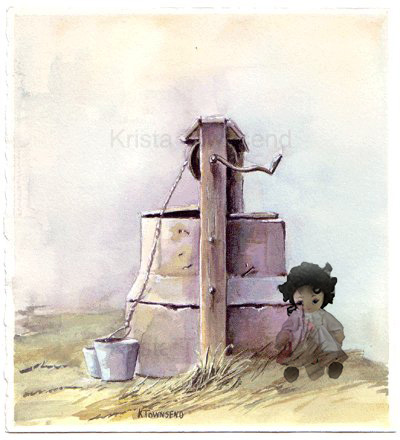July 18, 2021
Cherries have roasted on trees. Fields of canola and wheat have withered brown. On the shores, shellfish have popped open, broiling by the millions

As devastating heat waves sweep swaths of the globe, farmers in Canada are facing a crippling phenomenon: crops are baking in fields.
“It will totally upend Canadian food production if this becomes a regular thing,” said Lenore Newman, director of the Food and Agriculture Institute at the University of the Fraser Valley in British Columbia.
A heat dome roasted Canada in late June, leading to hundreds of “sudden and unexpected” deaths, according to officials, and sparking fear among Canadian farmers and climate experts. A village in British Columbia claimed the nation’s highest recorded temperature, clocking in just shy of 46 degrees. This weekend, another scorching wave is expected return to the nation.
“We can’t farm like this, where there’s a giant disruption every year,” she said. “Or we’re going to have to really rethink how we produce food.”
The climate stress is especially unwelcome at a time when the pandemic has put pressure on supply chains and food production. Floods, early freezes, droughts, pests and other emergencies have also strained Canada’s farming industry over the past several years. Multiple municipalities have declared states of agricultural disaster because of the heat and drought.
Early this month at a news conference about the heat wave, Canadian Prime Minister Justin Trudeau said the nation needs to reduce emissions and be a global leader on climate change.
“Extreme weather events are getting more frequent, and climate change has a significant role to play in that,” he said.
The heat waves are challenging all aspects of farm life.
Laborers can’t stay out in the fields when temperatures get so oppressive. Peak blueberry and cherry season should be approaching, but some farmers are already pulling workers from the fields for the season, Newman said. Others are turning livestock loose into growing fields, hoping to make some use of the toasted grains.

The outlook seems especially grim to many livestock farmers facing feed and clean water shortages for their animals.
“The damage is done,” Manitoba farmer Jason Bednarek told the Canadian Broadcasting Corp. “The only solution is to stop the bleeding and slaughter the cows.”
Some cattle ranchers are asking grain farmers whose crops have been devalued by the heat to consider using some of their yield as cow feed.
“The cow herd is in jeopardy in Manitoba for this winter,” Andre Steppler, a district director for a nonprofit that represents beef producers across Manitoba province, said in a video posted to Twitter.
One of Canada’s main agricultural provinces, Saskatchewan, recently changed its crop insurance regulations to encourage growers to give unsellable crops for use as livestock feed.
You could smell the destruction
LENORE NEWMAN
Steppler told The Washington Post it’s the first time in his farm’s century-long history that wells and springs have dried up. He considers himself lucky because his farm also grows grain, so he’s less concerned about his herd than many other ranchers. But feeding his cattle that grain will be economically damaging, and he anticipates having to sell off a quarter to 30 per cent of the herd.
“For us, this is historic,” he said of the heat wave.
As a livestock producer, Steppler said it’s upsetting to have to sell cows whose genetics his family has been fine-tuning for decades. But Steppler’s main concern, he said, is the mental health of other producers. He said it’s crucial for federal and municipal governments to act swiftly to help farmers avoid financial ruin.
On the crop front, losses are especially tough on farmers working with perennials who have spent years nurturing them to ensure they will bear fruit summer after summer.
Jocelyn Zurevinsky, president of Canadian Cherry Producers, said in an email that while her cherries in Saskatchewan saw rain in June, one of her orchards has been dry since May.
“The cherries bloomed well and the fruit set was fair, but the cherries are not filling,” she said. “We expect our entire harvest will go to juicing rather than the ingredient market for pies, spreads and syrups.”
While Newman doesn’t anticipate massive food shortages from the heat, she said consumers should expect a short-term spike in food prices.
Even as the heat has waned slightly, other threats have risen; most notably, wildfires ravaging parts of the nation.

“Fire is the great enemy of farming,” Newman said. “It’s the last thing you ever want to see on the horizon.”
Smoke can damage crops, and wildfires can burn out slow-to-recover pasturelands, making it even more difficult for ranchers to bounce back. Fires are an especially frightening prospect in the prairies, where the land is checkered with farms.
Agriculture and Agri-Food Minister Marie-Claude Bibeau said in a statement Thursday she’s monitoring the drought drying out some of the nation’s farmland.
“My heart goes out to those farmers and ranchers feeling the impacts of the extreme heat wave and drought conditions,” she said. “Our Government is ready to assist and we will do what we can to make sure our programs are adequately responding to the crisis.
Bibeau is also encouraging provinces to trigger the agricultural sector’s disaster relief program to help farmers with additional costs caused by the extreme heat and wildfires.
In Newman’s view, the only thin silver lining to the apocalyptic feel of this summer is that for some, it’s fast-forwarded the discussion on addressing climate change to preserve the food system. Even more conservative voices are now sounding the alarm, she said.
After the seemingly perpetual drought, Newman saw reason for a sliver of hope Saturday morning: A drizzle of rain was falling.
